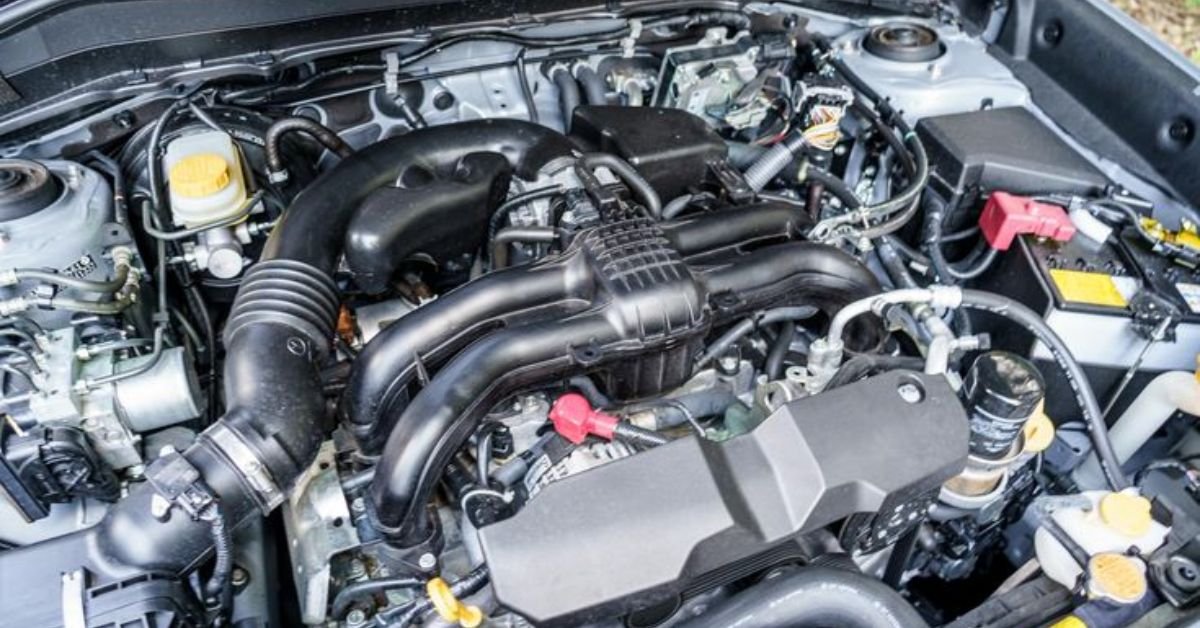The allure of a $1 million luxury car is undeniable. These vehicles transcend mere transportation, embodying a synthesis of engineering excellence, cutting-edge technology, and unmatched aesthetic craftsmanship. As symbols of prestige and exclusivity, they cater to the elite who seek more than just a car—they want an extension of their personal identity, something rare and truly exceptional. This guide delves into the intricate world of building a $1 million luxury car, exploring every aspect from materials to market trends.
Why $1 Million Luxury Cars Are the Pinnacle of Automotive Craftsmanship
Luxury cars priced at $1 million and above are the ultimate status symbols. Beyond their stunning designs, these cars represent the pinnacle of engineering, with every detail meticulously crafted to perfection. Over the years, the demand for these exclusive vehicles has soared, driven by the rise of ultra-wealthy individuals seeking to stand out from the crowd.
Overview of Luxury Cars as Status Symbols and Engineering Marvels
Luxury cars have always been a reflection of wealth, power, and taste. However, those in the million-dollar category go even further, combining rare materials, bespoke design, and performance capabilities that rival race cars. These cars aren’t just about getting from point A to point B; they’re about making a statement.
The Rise in Demand for Exclusive, Limited-Edition Vehicles
As wealth concentrates among the global elite, so too does the desire for exclusivity. Limited-edition luxury cars, often produced in runs of fewer than 100 units, create a sense of rarity that fuels demand. Each of these vehicles is a collector’s item, ensuring that only a select few can own them.
What Differentiates a Million-Dollar Car from Standard High-End Vehicles
While high-end luxury cars like a Mercedes-Benz S-Class or a Porsche 911 are expensive, they don’t compare to the exclusivity, craftsmanship, and innovation found in million-dollar cars. From custom-tailored interiors to engines designed for unparalleled performance, these vehicles are one-of-a-kind masterpieces.
Historical Evolution of High-End Luxury Cars
Luxury cars have come a long way from the early days of the automobile industry. Several brands, like Rolls-Royce, Ferrari, and Bugatti, laid the foundation for what would become the ultra-premium car market.
Key Luxury Brands That Pioneered the Ultra-Premium Car Industry
Rolls-Royce, Bugatti, and Ferrari stand as pillars in the history of luxury cars. Rolls-Royce, for example, became synonymous with opulence and bespoke design. Bugatti pushed the boundaries of speed and performance, while Ferrari captured the essence of Italian automotive passion and precision.
The Shift from Mass-Production Luxury to Bespoke, Tailored Vehicles
Initially, even luxury cars were produced in larger numbers, albeit at a premium price. However, as customer demand evolved, brands began offering bespoke customization options. The shift from mass production to custom, limited-run vehicles marked a turning point in the luxury car market, catering to those who wanted more than just a high-end model—they wanted a personal expression of their taste and style.
The Anatomy of a Million-Dollar Car
Every $1 million car is a marvel of materials, design, and performance. The meticulous selection of materials and the craftsmanship involved in their construction ensure that each vehicle is as unique as its owner.
Materials: What Goes Into the Body and Interior?
Luxury carmakers use only the finest materials. Exotic metals like titanium and carbon fiber keep the car lightweight and strong. Inside, high-grade leathers, precious metals, and rare woods are hand-stitched and polished to perfection. Some cars even feature precious stones or metals in the detailing, further elevating the car’s luxurious feel.
Custom Craftsmanship
Each $1 million car is made by skilled artisans. From hand-stitched leather seats to custom wood veneers, no detail is too small. Clients often have direct input in the design process, ensuring that every element aligns with their vision.
Design Philosophy: Combining Aesthetics and Functionality
Design is a critical aspect of luxury cars. Not only must the car look stunning, but it also has to perform at the highest level. Designers work to balance aesthetics with aerodynamics and performance, creating a car that is both visually captivating and functionally superior.
Iconic Design Elements of Luxury Cars
Luxury cars often feature unique design elements that set them apart. From sleek, flowing lines to bold, aggressive stances, the design of these cars is unmistakable. Aerodynamics is a key consideration, allowing for high-speed performance without sacrificing visual appeal.
Performance: Engineering Mastery for Unparalleled Driving Experience
Luxury cars are known for their performance, with many boasting engines that can propel them to speeds well over 200 mph. Powertrains often feature V12 engines or hybrid-electric systems, combining raw power with cutting-edge technology.
Powertrain and Engine Innovation
The engine is the heart of a luxury car. In million-dollar vehicles, engines are often hand-built and custom-tuned to offer extreme power and responsiveness. Hybrid systems are also becoming more common, allowing for an eco-friendly yet high-performance driving experience.
Cutting-Edge Technology
From adaptive suspensions to AI-powered driving systems, technology plays a vital role in enhancing the performance of luxury cars. These vehicles feature the latest innovations in automotive technology, providing a seamless blend of power, comfort, and convenience.
The Process of Creating a $1 Million Luxury Car
Building a luxury car is an intricate process that begins with a vision and ends with a bespoke, tailor-made masterpiece. Every step, from concept development to final assembly, involves precision and attention to detail.
Concept Development: From Vision to Design
The process begins with the brand’s vision. Designers and engineers collaborate to create a concept that not only reflects the brand’s legacy but also pushes the boundaries of innovation. Every detail, from the shape of the car to the materials used, is carefully considered.
Precision Engineering and Assembly
Luxury cars are built with precision. Every component, from the engine to the bodywork, is meticulously crafted to meet the highest standards. Unlike mass-produced vehicles, these cars are often assembled by hand, ensuring that every detail is perfect.
Limited Production Lines vs. Mass-Produced Vehicles
Unlike mass-produced cars, million-dollar luxury vehicles are often made in small batches or even as one-offs. This exclusivity is part of what makes them so special. Each car is tailored to its owner’s specifications, ensuring that no two are alike.
Customization and Personalization
One of the most appealing aspects of owning a luxury car is the ability to customize it. Owners can choose from a wide range of options, from bespoke paint jobs to custom interiors. Every element can be personalized to reflect the owner’s style.
Tailor-Made Features
Luxury car manufacturers offer tailor-made features that go beyond standard options. Whether it’s a custom interior with rare leather or a one-of-a-kind paint job, these cars are designed to be as unique as their owners.
Key Brands and Models That Define the $1 Million Car Market
Several brands stand out in the luxury car market. Each has its unique approach to crafting high-performance, luxury vehicles that command seven-figure price tags.
Bugatti: A Legacy of Power and Performance
Bugatti is synonymous with speed and performance. Iconic models like the Bugatti Chiron and Veyron have redefined what it means to drive a supercar. Known for their powerful engines and luxurious interiors, Bugatti cars are a favorite among collectors.
Ferrari and Lamborghini: The Italian Dream
Ferrari and Lamborghini are two of Italy’s most renowned car manufacturers. Ferrari’s dedication to speed and prestige is unmatched, while Lamborghini is known for its bold, aggressive designs and powerful performance. Both brands have produced some of the world’s most iconic supercars.
Rolls-Royce: Timeless Elegance and Bespoke Luxury
Rolls-Royce is the epitome of luxury. Each car is a work of art, designed to offer the ultimate in comfort and exclusivity. Rolls-Royce vehicles are often custom-built to the owner’s specifications, ensuring a truly personalized experience.
Koenigsegg and Pagani: Engineering Meets Art
Koenigsegg and Pagani are known for blending engineering genius with artistic craftsmanship. These hypercars are not just fast—they’re beautifully designed, with every detail carefully considered to create a masterpiece on wheels.
Why Build a $1 Million Car? The Economics and Market Behind Luxury Car Manufacturing
The market for million-dollar luxury cars is driven by an elite consumer base. These vehicles represent more than just cars—they are investments, symbols of status, and works of art.
The Ultra-Wealthy Consumer Base
The clientele for these cars is made up of the world’s wealthiest individuals. These cars are not just a means of transportation but a reflection of their owners’ success and status.
Cost of Production and Justification for the Price
Building a $1 million car requires significant investment. From research and development to the materials used, the cost of production is high. However, the exclusivity and craftsmanship that go into each car justify the price tag.
Brand Value and Limited Editions
Brands like Ferrari, Bugatti, and Rolls-Royce leverage their legacy and reputation to command high prices. Limited edition models further enhance the car’s appeal, making them highly sought after by collectors.
Future Trends in the $1 Million Luxury Car Market
The future of luxury cars is evolving, with electric and hybrid powertrains, sustainability, and advanced technology becoming increasingly important.
Electric and Hybrid Luxury Cars
As the automotive industry moves towards electrification, luxury car brands are incorporating electric powertrains into their offerings. These cars combine eco-friendly technology with the high performance that luxury buyers expect.
Sustainability in High-End Luxury Cars
Sustainability is becoming a key concern for luxury car manufacturers. Many are turning to sustainable materials and practices to reduce their environmental impact without compromising on quality or performance.
Tech Integration: Autonomous Driving and Smart Vehicles
Technology is reshaping the driving experience. Features like autonomous driving, AI, and smart systems are becoming standard in luxury cars, offering a seamless blend of convenience and innovation.
The Ownership Experience: What It’s Like to Own a $1 Million Luxury Car
Owning a million-dollar car is about more than just driving—it’s a lifestyle. From exclusive clubs to bespoke services, the ownership experience is unparalleled.
Lifestyle: Status, Exclusivity, and the Social Appeal
Owning a luxury car elevates one’s social status, granting access to exclusive events, clubs, and networks. These cars are more than just vehicles; they are tickets to an elite lifestyle.
Maintenance, Upkeep, and Long-Term Care
Luxury cars require meticulous care. Owners often invest in specialized service contracts, ensuring their vehicles remain in top condition. Expert mechanics and bespoke parts are essential for maintaining these cars.
Resale Value and Investment Potential
Many million-dollar cars hold or even increase in value over time. Limited editions and rare models often appreciate, making them a sound investment for collectors.
Conclusion
The creation of a $1 million luxury car is a process that involves artistry, innovation, and a deep understanding of both engineering and design. These vehicles stand as the ultimate expression of wealth, status, and cutting-edge technology. As the world of luxury cars continues to evolve, they will remain coveted symbols of personal achievement and mechanical mastery.





